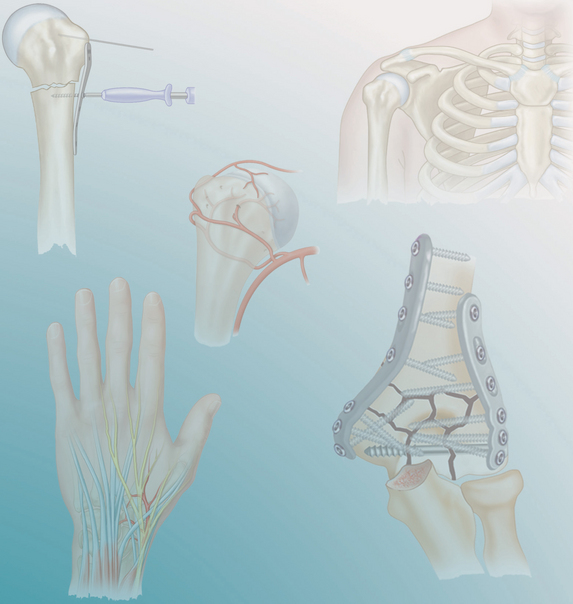PROCEDURE 16 Perilunate Injuries
Indications
 The dorsal approach to the carpus gives the best exposure for open reduction of carpal malalignments, reduction and fixation of fractures, and scapholunate interosseous ligament repair. It is usually the first approach in combined dorsal-volar approaches.
The dorsal approach to the carpus gives the best exposure for open reduction of carpal malalignments, reduction and fixation of fractures, and scapholunate interosseous ligament repair. It is usually the first approach in combined dorsal-volar approaches. The volar approach is used to decompress the carpal tunnel, to reduce an irreducible dislocation if needed, and to repair the volar capsular rent.
The volar approach is used to decompress the carpal tunnel, to reduce an irreducible dislocation if needed, and to repair the volar capsular rent.• Irreducible lunate dislocations cannot be addressed with only a dorsal approach (i.e., lunate trapped in carpal tunnel).
• Closed reduction is performed early to restore overall carpal alignment, and to reduce pain and swelling, until such a time that an open reduction and repair can be done.
• Closed reduction and percutaneous pinning is extremely difficult in a perilunate dislocation, due to the inability to maintain anatomic alignment during the stabilization maneuver.
Examination/Imaging
 Diagnosis can be challenging with physical examination alone. Injuries can be missed 25% of the time (Herzberg et al., 1993).
Diagnosis can be challenging with physical examination alone. Injuries can be missed 25% of the time (Herzberg et al., 1993). Standard posteroanterior and lateral radiographs are obtained to make the diagnosis. Findings may be subtle. Oblique or traction views may give additional information about the pattern of injury.
Standard posteroanterior and lateral radiographs are obtained to make the diagnosis. Findings may be subtle. Oblique or traction views may give additional information about the pattern of injury.• Lateral radiograph
♦ The lateral radiograph is examined for a lack of co-linearity between the radius, lunate, and capitate.
• Posteroanterior radiograph




♦ The posteroanterior radiograph is examined for any disruption of the smooth arcs formed by the proximal aspect of the distal carpal row and the proximal and distal aspects of the proximal carpal row (Gilula et al., 1984) (Fig. 2).
Stay updated, free articles. Join our Telegram channel

Full access? Get Clinical Tree






